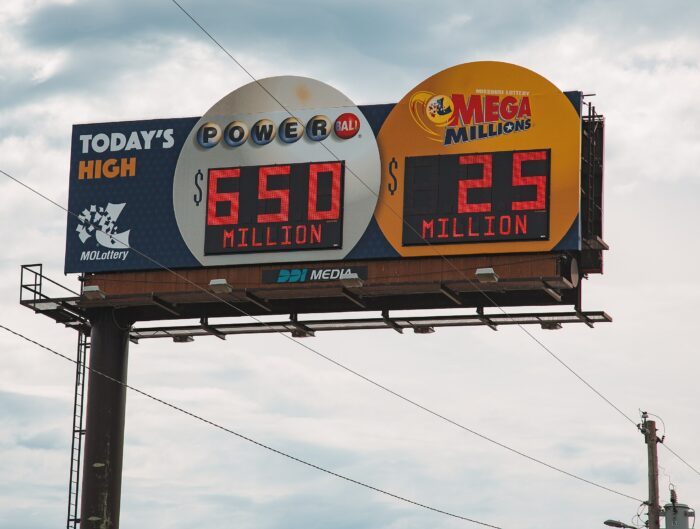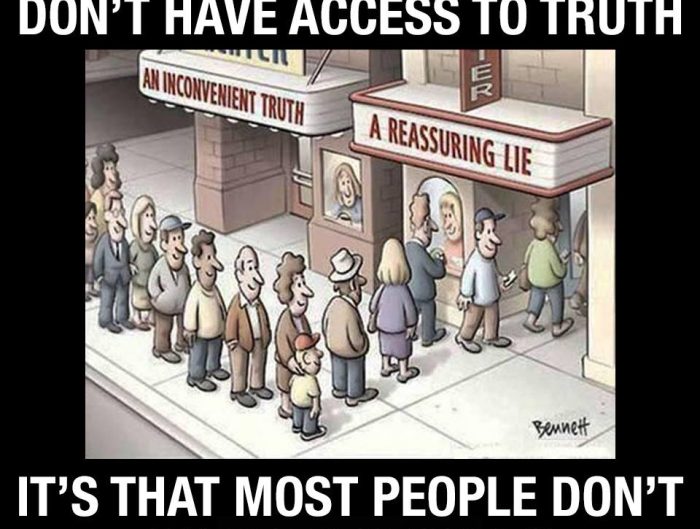Imagine I told you that by switching your money from one investment vehicle to another—with the click of a button!—you could not only earn the same return on your investment with the same level of risk as before, but also solve profound societal problems: Poverty, climate change, income inequality, homelessness. Wow!
Absurd as it sounds, this is the crux of the impact investing sales pitch, that without any effort, without any change to the systemic issues of racism, sexism, and corporate power that cause these problems, one can invest in their solutions. Yet the idea is so appealing to the desire of wealthy people to do good without offending their desire to do well—that is, to keep and grow their obscene wealth—that myriad impact investing options have proliferated to cater to them. Now every investor is a social investor, everyone feels good about themselves, and little changes.
Here are two examples of companies pitching this socially responsible snake oil:
John Hancock has launched its COIN platform with the slogan, “We believe all investing is impact investing.” Targeted to millennials and their well-documented desire to break from the failed policies of older generations that have created so many social challenges, COIN “gives you the power to put your values at the center of your investment choices.” How does it do that? Using a slick interface, you enter information about your values and areas of interest—fair labor practices, training displaced workers, renewable energy—and then find out how your current portfolio ranks in those categories. Then, you can switch your investments to score better. Unfortunately, all you are doing is moving your money from one publicly traded company to another: maybe Conagra to PepsiCo because, I don’t know, Pepsi treats its workers better? I’m making that up, but this is the kind of criteria at the heart of effortless social change. Of course, neither firm is socially responsible by any reasonable definition; both exist to make a profit, and do so at the expense of people and the planet; and whether you put your money in one, the other, or both makes virtually no difference when it comes to what you are purporting to do—better the world. I mean, come on. How many of us actually believe that PepsiCo or Walmart can be true forces for good? The one is selling sugar water that causes diabetes and the other decimates local economies, underpays workers, and sells garbage products made in China.
Morgan Stanley has an Investing with Impact product. Their slogan, a quote from the firm’s Chairman and CEO, gets to the heart of the matter: “To galvanize the necessary capital to have real impact, sustainable investing can’t be limited to investors willing to accept unattractive returns in order to create social good. Getting to scale requires investment products that seek attractive returns while benefitting society. This is the philosophy behind our Investing with Impact Platform.” There it is a nutshell. The only way to better the world is to find a way to make it attractive enough, profitable enough, that the rich will invest their precious money in social good.
So how does Morgan Stanley perform this financial magic trick of changing lives without changing anything about how their clients invest? By “Delivering Value Across Multiple Dimensions,” of course! Specifically, you can choose between 140 products, most of which are publicly traded stocks and mutual funds, which is pretty much the same as COIN. The only difference is that if you are a “qualified investor”—a quantitative definition of being wealthy—you can invest in alternative investments, for instance in private equity funds that focus on renewable energy. While this is a little better than COIN, we are in the same territory as before, expecting to radically change the world without changing anything about how we invest in that better world. Or, to paraphrase the great poet Audrey Lorde, trying to destroy the master’s house with the master’s tools.
Why Can’t You Do Well and Do Good?
Just as there is no such thing as a $5 t-shirt, a 100X return on a social investment is a unicorn, a mythical creature that sounds good in theory but cannot be found in the world of fact and truth. Yes, you can pay $5 for a cotton shirt at Walmart, and yes you can invest in a venture capital fund and earn a 100X return, but that isn’t what it costs to society and the planet. Think about how much you would have to pay if embedded in the cost of the shirt were the wages not paid to the seamstresses in Bangladesh; the water poisoned by chemicals used to make the shirt; the greenhouse gases emitted by the manufacture and shipping of the shirt; and all the other externalities paid by someone else—sickened people, governments, the climate. Well, I imagine the cost would be along the lines of what you pay for an organic, fair-trade shirt sold by a company like Patagonia, $50 or more.
What about the 100X return? Can’t you invest in a company that delivers clean water to a slum in Nairobi, Kenya AND make a ton of money? No, you can’t. The only way for an investor to make that much money is if the company in which they invest goes public or is purchased by another, larger firm. If the clean-water for-profit were to go public or be sold, the investors would demand, as they always demand, that the company do all it can to maximize profits; the moment profits come into conflict with social impact, profits will win out. Every. Single. Time. So yes, maybe if the company starts to charge exorbitant prices to people who cannot otherwise drink safe water, maybe if they start to mine that water to be sold to Evian to make bottled tap water for Americans and Europeans—maybe then they will generate solid returns for investors. But so much for the social impact, and now someone else is paying for the cost of people unable to afford clean water and dying of diarrhea: NGOs, governments, family members.
So no, you can’t do well and do good. If you could, wouldn’t everyone? If you had to sacrifice nothing, why would you choose making 100X on a company that “does bad” instead of on a company that “does good”? You wouldn’t. Sure, you can point to Tesla or wind and solar companies and argue that those are examples which contradict my argument, but in fact they are exceptions to the rule, which is that, alas, you can’t do well and do good. As someone who has for nine years run a nonprofit, I can assure you doing good ain’t easy; doing good is freaking hard. Poverty is complicated. Climate change is complicated. Homelessness is complicated. HIV, malaria, and tuberculosis are complicated. Complicated isn’t profitable. Complicated doesn’t lend itself to easy solutions. Complicated, in short, can’t be solved by logging into your COIN account and moving $100,000 from Conagra to PepsiCo.
When I say that most impact investing is bullshit, then, what I mean is that, in over three years of raising social capital from impact investors for Capital Good Fund, I have heard the same refrain time and again: the rate of return is too low, the level of risk too high. Put another way, it’s too hard. Come back when we can click a button and invest in you without losing sleep, without losing anything, they are saying. But we cannot make loans to low-income Americans and do what you want us to do; if you aren’t willing to take a risk, the only risk you run is to continue to live in a country, in a world, that does not align with your stated desire to tackle income inequality, climate change, homelessness, and so on. (And don’t get me started on the idea that, instead, one should work to make as much money as possible and then donate it to charity. Claiming that it makes sense to earn millions, or even billions, of dollars in ways that harm people and the planet and then donate to solve the problems you helped create is patently stupid, yet that is the crux of how the world of philanthropy works—ass backwards. I’d rather people make money in ways that are good for the world, even if that means having less money to donate).
In sum, until impact investors come to terms with what impact investing means and entails—sacrifice, risk, dedication, hard work—the only thing that will change is how they feel about themselves.



